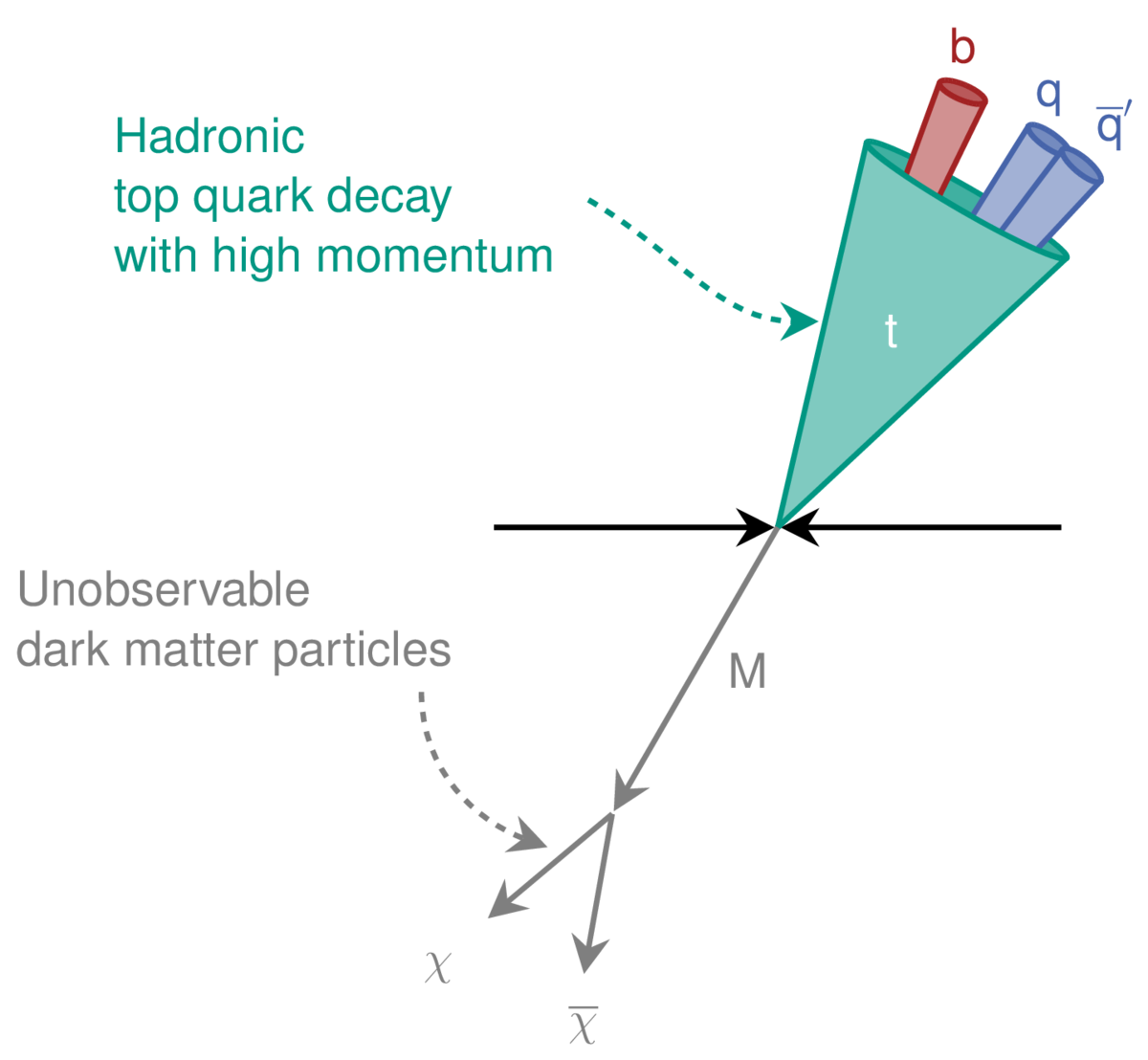Always top - never monotone: Search for dark matter in monotop events
Using the CMS detector and the heaviest of all elementary particles as tools, a team with significant participation from ETP researchers has been conducting a search for dark matter in recent years. At the center of the search is the mechanism of "monotop production", a possible mechanism by which dark matter could be produced together with a top quark.
Based on observations from cosmology, we know that only a small fraction of our universe consists of ordinary matter, from which the atoms and molecules in our environment are built. A large proportion is formed from so-called dark matter. It is unclear how dark matter can be embedded in our picture of elementary particles and how it interacts with other elementary particles.
Interactions between dark and ordinary matter can be searched for at the Large Hadron Collider (LHC) at CERN, for example. There, protons collide at very high energies. Dark matter could be produced in such collisions. The search is concerned with monotop events, in which dark matter is produced together with a single top quark. The interaction between the particles of the standard model and dark matter is mediated by a heavy exchange particle.
The search focuses on top quarks with very high momenta. In this case, the decay products of the top quark move in the same direction. In the CMS experiment, such decays of top quarks can be easily detected using machine learning methods. The dark matter produced cannot be detected with the detector. However, an unusually large contribution of “missing momentum” can be observed, which tends to be larger than processes of the standard model produce.
The analysis of the LHC data recorded between 2016 and 2018 provides no evidence for the production of dark matter via the monotop process. Therefore, value ranges for the masses of the exchange particle and dark matter were determined in which the occurrence of a monotop process can be excluded with a very high probability. These exclusion limits were improved compared to a previously published search for the monotop process with the CMS detector, in which only data from 2016 were analyzed.
The results were compiled by an analysis group that literally spans the globe. Researchers from KIT, the Fermi National Accelerator Laboratory (USA) and Kyungpook National University (South Korea) took part in the search.
The article has been submitted to the Journal of High Energy Physics (JHEP) for peer review. A preprint is available.
Contact: Prof. Dr. Ulrich Husemann


